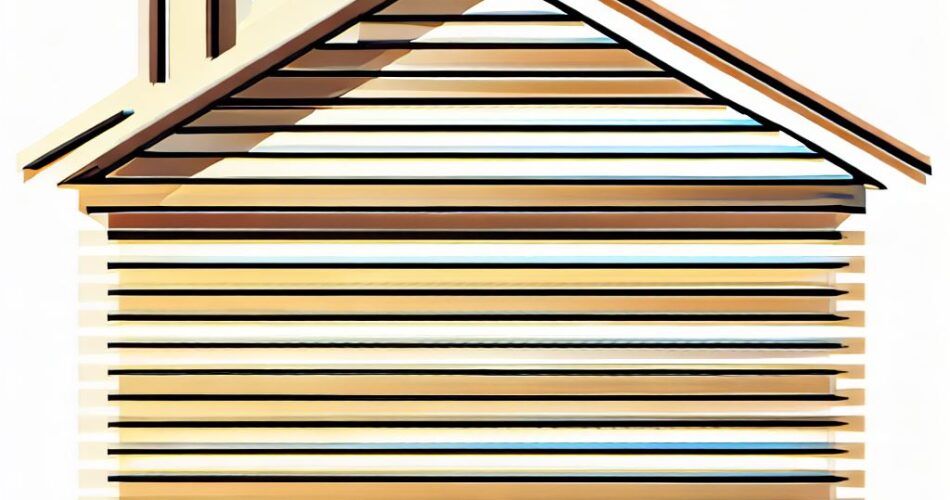Siding is one of the most important parts of a property, not only for bringing beauty to it throughout the neighborhood, but for bringing safety for those who are inside it and increasing its value.
And when the necessity for a new siding installation or replacement shows up, we must consider a huge variety of sidings, carefully taking into account such things like, the type, color, texture and even if it will be vertical or horizontal; and every type has its pros and cons.
It seems curious when saying vertical or horizontal siding, but the question has an important influence on your decision of which siding is right for you! The key differences between them are how their installation is and the visual effects each one creates.
Vertical siding is just another name for the familiar board and batten siding. It involves installing the planks in a top-to-bottom vertical way. This unique style of siding has become more and more popular among the properties, being eye-catching.
And, the most important thing, vertical siding can be cleaned easily without too much effort, preventing the water from flowing to the ground, keeping dust and debris away. So, an easy option to maintain.
Whereas horizontal siding can also be called by clapboard or lab siding. This is the most popular type among houses from all neighborhoods, hanging exterior boards from left to right.
Horizontal siding has a traditional and classic appearance, being easier to install than vertical one and it can be done quickly with no worries, in addition to its affordability, which is less pricey since the installation is not a challenge.
Hiring a siding professional is the best way to make sure the right type of siding will be installed properly, fitting your wishes with a complete quality and excellence. Installing or replacing a siding, whether vertical or horizontal, is far from being an easy task.
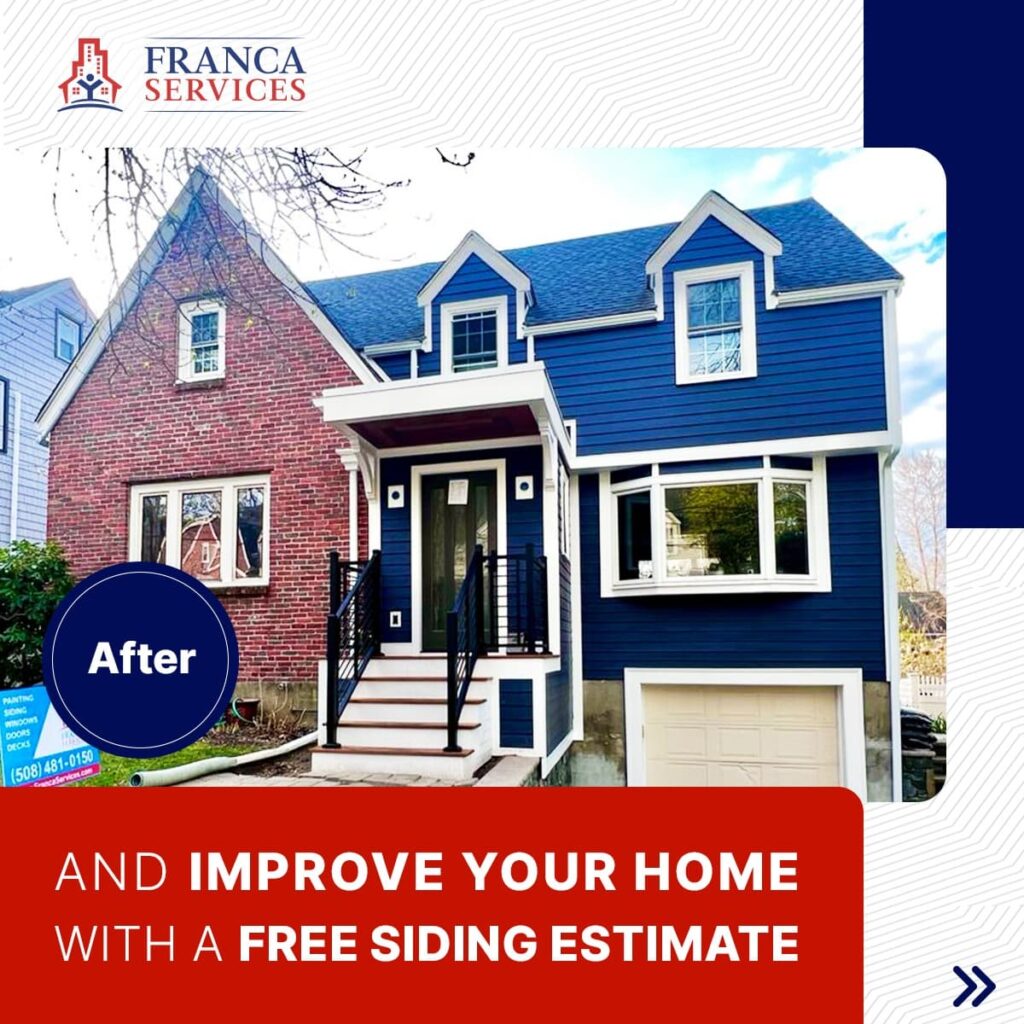
Understanding the Basics of Siding
Before choosing if you need a vertical or horizontal siding, let’s understand what are the panels that go around the property’s exterior.
What is Siding?
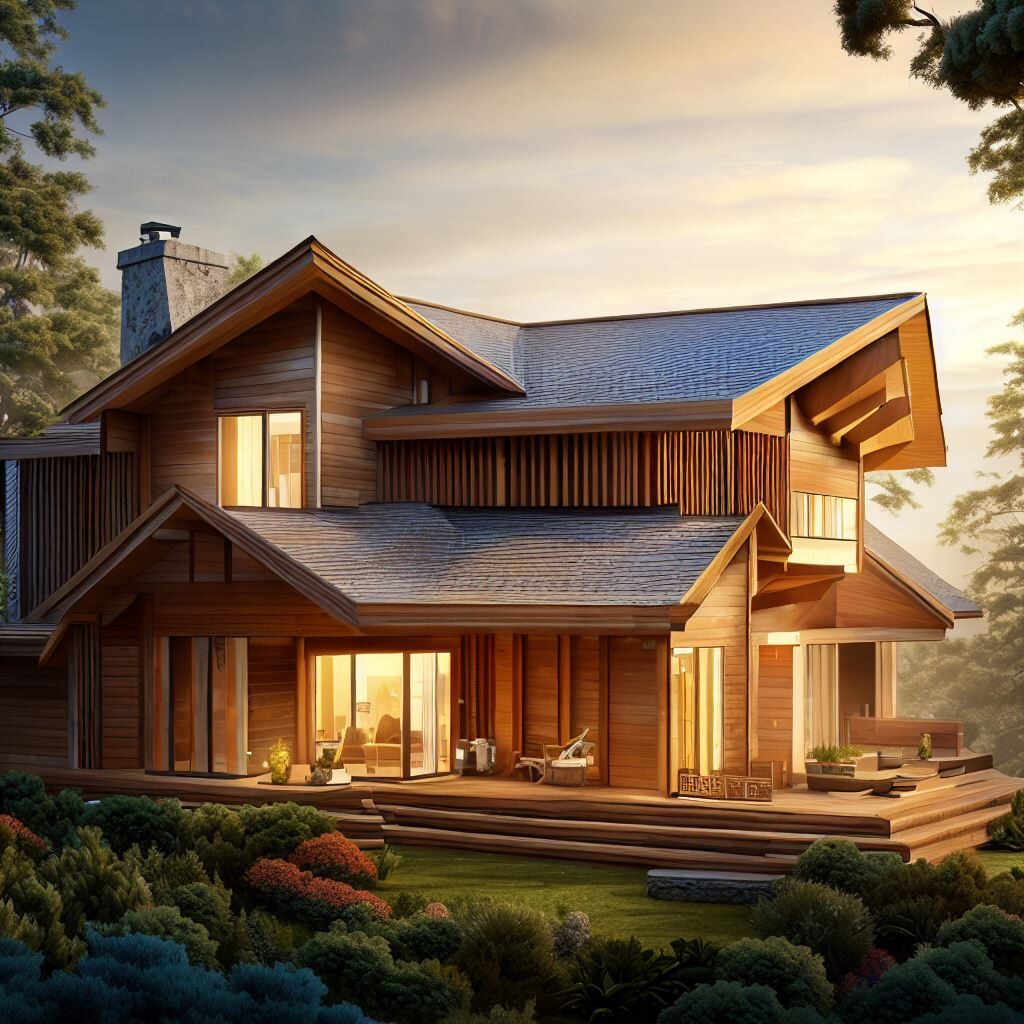
Siding is a material that goes on the outer part of a building, not just to increase its curb appeal, but as the building is constantly exposed to environmental elements, like rain, snow and severe winters, a siding creates a barrier against them, giving full protection.
Not just thinking about building’s safety and beauty, but it can be a great ally of your energy bill, preventing the loss of heat or coolness from the inside, and also keeping dirt, mildew, moisture and insects away.
After building the whole house frame, plywood sheets are nailed to the structure, but, as they are not resistant to water and other elements, they are not able to offer the right protection a building needs; a siding does!
A siding installation is done from the bottom to the top with the help of nails that are resistant to rust, galvanized ones. Each part must overlap the other, so water does not penetrate the sheeting.
It is important to always pay attention to your siding lifespan because, depending on the siding material chosen, after a while and much exposure, a replacement might be required for your current one.
So, if your siding is suffering from cracks, warps, rot, stripping, holes, moisture or mildew, a siding replacement job is necessary to avoid any worst headache. The sooner these problems are repaired, the safer your residential or commercial building is.
Sidings have different materials, shapes, sizes, textures, colors, and brands, whether you are installing a brand new one on your building or replacing your old existing siding, we can assure you that it will bring a lot of advantages to your property.
Importance of Siding Orientation
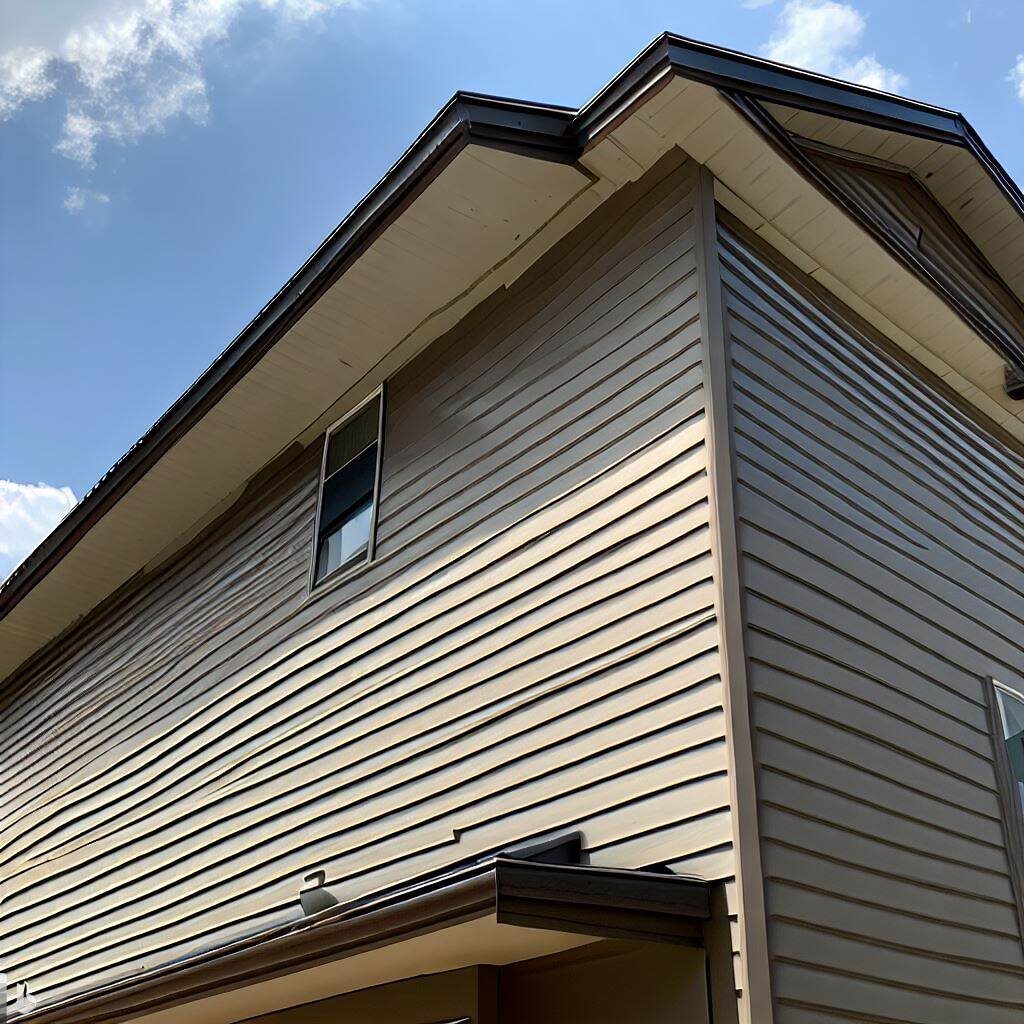
A horizontal siding consists of hanging boards from left to the right side and if you want a property looking to have widespread appeal, this is definitely a good bet for you!
Whilst horizontal boards give an extensive look, vertical boards will add height to a small property, being an appealing look for modern. And as vertical siding is not common among houses, the one that has it will be noticeable.
The direction of the siding planks does not only influence aesthetics, but it can affect the function of the home. When it rains, water is more likely to affect the horizontal siding because it collects on the upper part of the planks, penetrating directly to the walls, causing some problems.
However, vertical siding prevents water from the rain from flowing to the ground and entering the spaces between the planks, in addition to washing away dust and other things.
But it is not a rule that horizontal siding will always cause serious problems to a property; the most important thing is just to keep looking carefully at the structure to identify a problem as soon as it shows up.
What is the most common type of siding used today?
Horizontal siding is the most common type used nowadays among residential buildings, whereas vertical siding can be seen with more ease on the outer part of commercial ones.
Although horizontal siding is the powerful preference, it does not mean vertical siding is being left out from homeowners’ taste, quite the opposite, since vertical siding is considered a modern option for those who are looking for a distinct look.
While horizontal siding is well-known for being traditional, bringing a classic and timeless design to your property, a vertical one is fashionable and it brings a unique flare to a home, achieving an appearance little seen by neighbors.
Vertical Siding: Features and Benefits
Characteristics of Vertical Siding
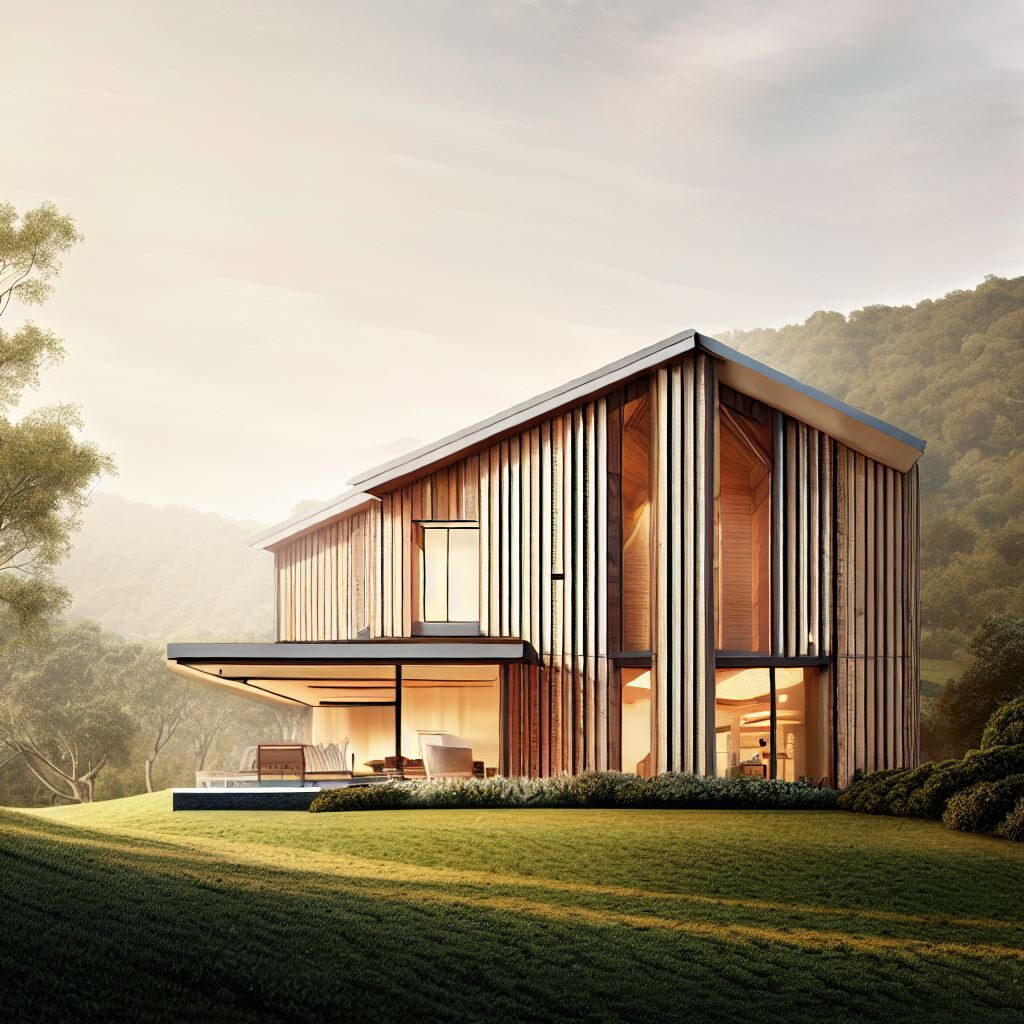
If you have ever heard about board and batten siding, you definitely know about vertical siding! Even though this orientation is more popular for commercial properties and farmhouses, it has been able to be seen it with more frequency on modern houses.
Panels are disposed on the wall cladding, so it can add height to a structure, especially for a small one. And, as it is installed over a small furring strip, turning vertical siding into a durable and water-resistant choice for those who do not want to worry about repair and maintenance.
Vertical siding comes in 4 different types of material, each one with their own benefits and characteristics, they are: vinyl, wood, cedar, and fiber cement.
Vinyl
This is the most widely used type of vertical siding used among the properties, not only because it is the least expensive, but it comes in many different colors, sizes, and shapes.
Not only talking about its aesthetically appealing, but its installation is also the easiest, free from worries when panels are laid by the contractors, in addition to being resistant to damage.
Wood
Wood siding easily brings the natural look of wood to a property, and it is well-known for bringing a warmth and sophistication at the same time.
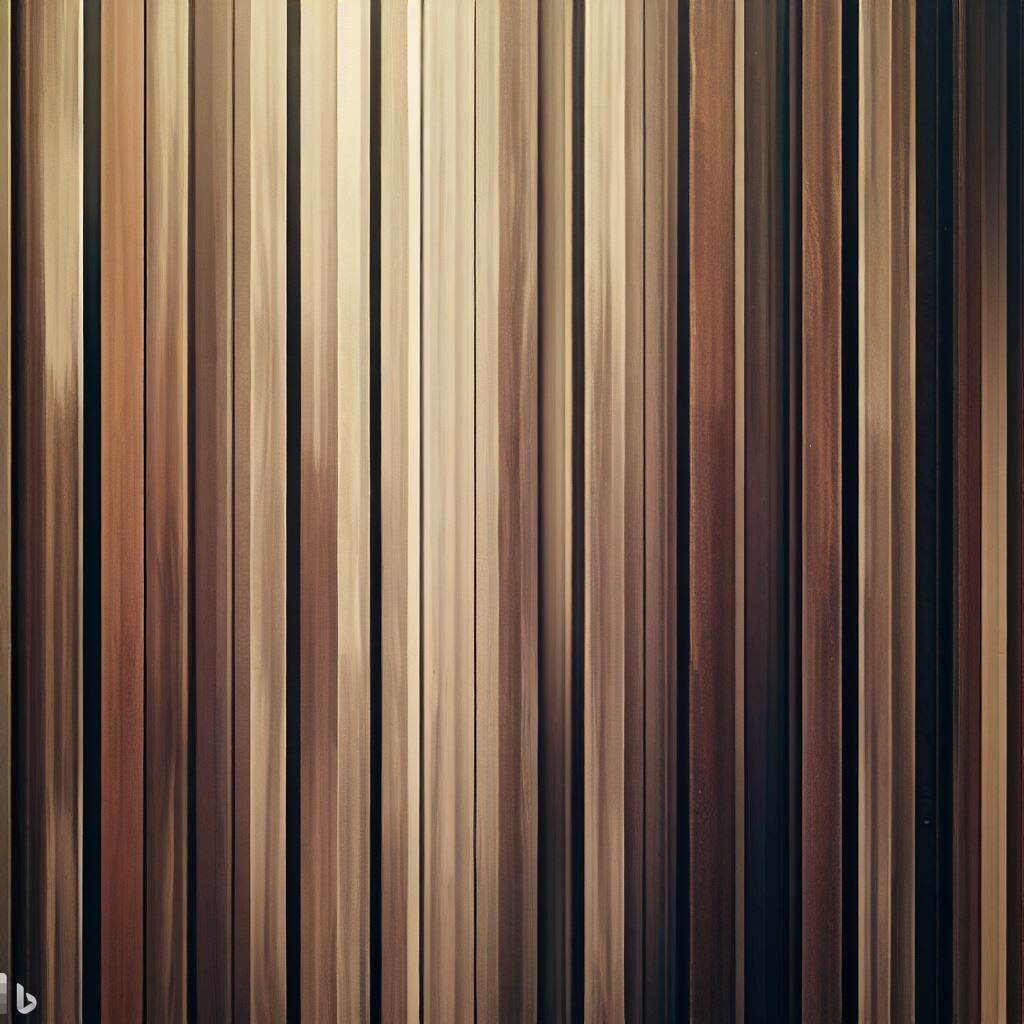
While natural wood requires more maintenance, this siding lasts longer without being so expensive and upkeep, in addition to increasing the property value in terms of aesthetics.
Whereas wood siding is more expensive to purchase, to install, needing to hire a contractor with experience, and it will need more attention than vinyl siding, but it brings the natural look of wood like no other option.
Cedar
Even though cedar siding is considered a more complex option in relation to its installation, requiring contractors with expertise and skills to do the job, it just needs the basic maintenance and annual inspections.
Cedar is a premium material that is going to last a long time and protect properties from moisture, and with such investment it is inevitable to bring value when in the market.
Fiber Cement
This siding is a mix of cement, sand, water, and cellulose fibers, and it has become more popular year after year due to its high duration, stunning appearance, and curb value to properties.
It can be one of the most expensive materials in the market, but in addition to everything said before, it is fire and pest resistant, so owners will never regret making such an investment.
What is the best material for vertical siding?
Taking into account all the benefits, we can affirm that, even though it is an expensive option, Fiber Cement is worth the investment!
Not only for its beauty and availability of colors and shapes, but for being a long-lasting material, with high duration and fire and pest resistance.
If the job is done for people with the right expertise and skills, it is certain to have the benefits that it promises.
Advantages of Vertical Siding
It is beyond doubt that the most important advantage of vertical siding is its durability and water-resistance! When correctly installed it certainly prevents the entrance of water between the panels, so no worries are needed in relation to the properties structure.
When compared to horizontal siding, vertical siding has a way easier maintenance. Even with months of environmental exposure, only water is necessary to clean up the dirt and grime buildup on the siding, helping you to save money and time in the long run.
Looking for a distinct and eye-catching appearance for your building? Vertical siding achieves it! Modern homes which are seeking a contemporary look choose this orientation to bring curb appeal and stand out in relation to the neighborhood.
Is vertical siding waterproof?
Vertical siding, as the name says, consists of panels whose orientations follow the precipitations, so, if it is installed correctly, it prevents water from entering the areas between them, keeping all the property’s structure safe.
For that reason, yes, we can consider vertical siding as being waterproof, holding perfectly up to its reputation as a water-resistant option when the installation is done by a team of experts that will do it with no mistakes.
Common Use Cases for Vertical Siding
As the horizontal siding came earlier than the vertical one, it is familiar to see it on the exterior of residential properties all around the US.
Even though vertical siding has become more popular on houses these days, we are able to see it with more frequency on commercial properties, such as offices, educational facilities, and on country designs and farmhouses, more specifically on barns.
Horizontal Siding: A Timeless Choice
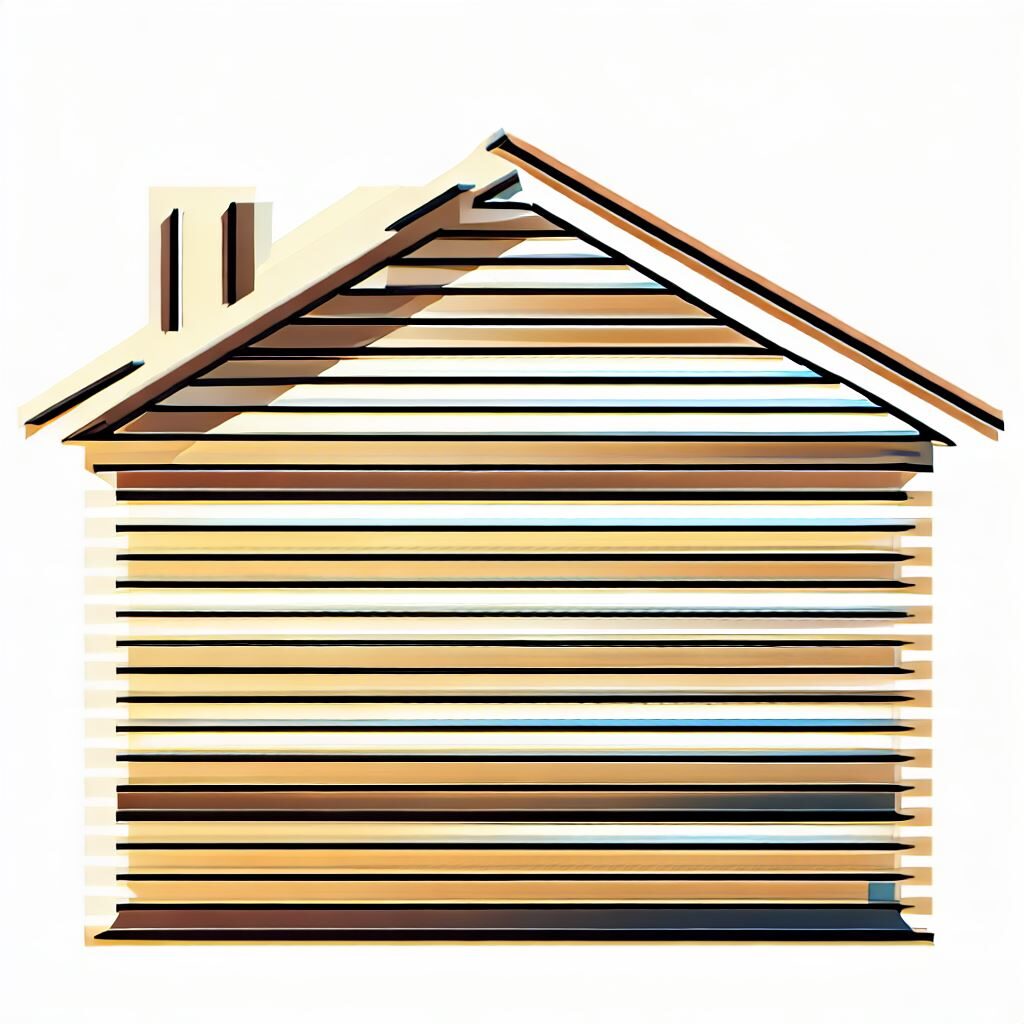
Characteristics of Horizontal Siding
Horizontal siding is called either clapboard or lap siding, and its rectangular panels come in widths of 5 to 9 inches, as well as offering many options of colors, justifying one more time why this orientation has a huge popularity.
As vertical siding, the horizontal one can be also found in 4 different materials, such as vinyl, wood, cedar, and fiber cement.
Vinyl
Considering all other materials, this is the most cost-effective one and by far the most widely chosen! But it does not mean that its quality is not worthy, because it has improved a lot, being more durable than it was in the past.
Its installation is considered easy among contractors, which means it takes less labor to lay the panels, consequently requiring less money considering the whole project.
Wood
Deciding for wood siding on the exterior of properties is certain that it will add curb appeal to them! Its rustic appearance can be more expensive than vinyl, caused by the installation complexity, which takes more expertise.
Cedar
Here it is an option that suits almost any style, from traditional properties to modern. Whether you are installing these materials in the horizontal or vertical orientation, both require a careful approach, but horizontal is still easier to install, as it is not necessary to use extra materials for installing the furring strips between panels, as vertical is.
Fiber Cement Siding
Lastly, fiber cement is considered extremely valuable taking into account its time on the market. A more water-resistant option than wood, having fewer moisture issues, it has a considered cost compared to other options, but is worthy.
Benefits of Horizontal Siding
For horizontal siding the aesthetic benefit is by far the most important advantage of this orientation. Since settlers came to North America, this siding has been used all around houses, so its traditional look is a good bet to avoid any potential risks.
Capable of offering range options of sizes and colors while providing elongation for all properties with its horizontal lines, it is perfect for different tastes and design preferences.
Installing horizontal siding it is a certainty that no problems in relation to the correct installation will disturb the owner. Most contractors know who to lay the panels, so they can do it faster, half the time compared to vertical, which means you are going to pay less for labor and materials.
Why Horizontal Siding Dominates Residential Homes
Horizontal siding is so popular nowadays, but where did this popularity come from?
A long time ago, wood was used to build the whole house, parts such as frame, roof, walls and even base. When settlers came to North America, they brought with them methods to cover roofs and walls using logs, but, when they arrived here, they found out trees which could be used to develop our horizontal siding.
The clapboards were the first type of horizontal siding created, becoming very popular during the Industrial Revolution, and, as the machineries and technologies were becoming more and more advanced, people started creating a huge variety of patterns.
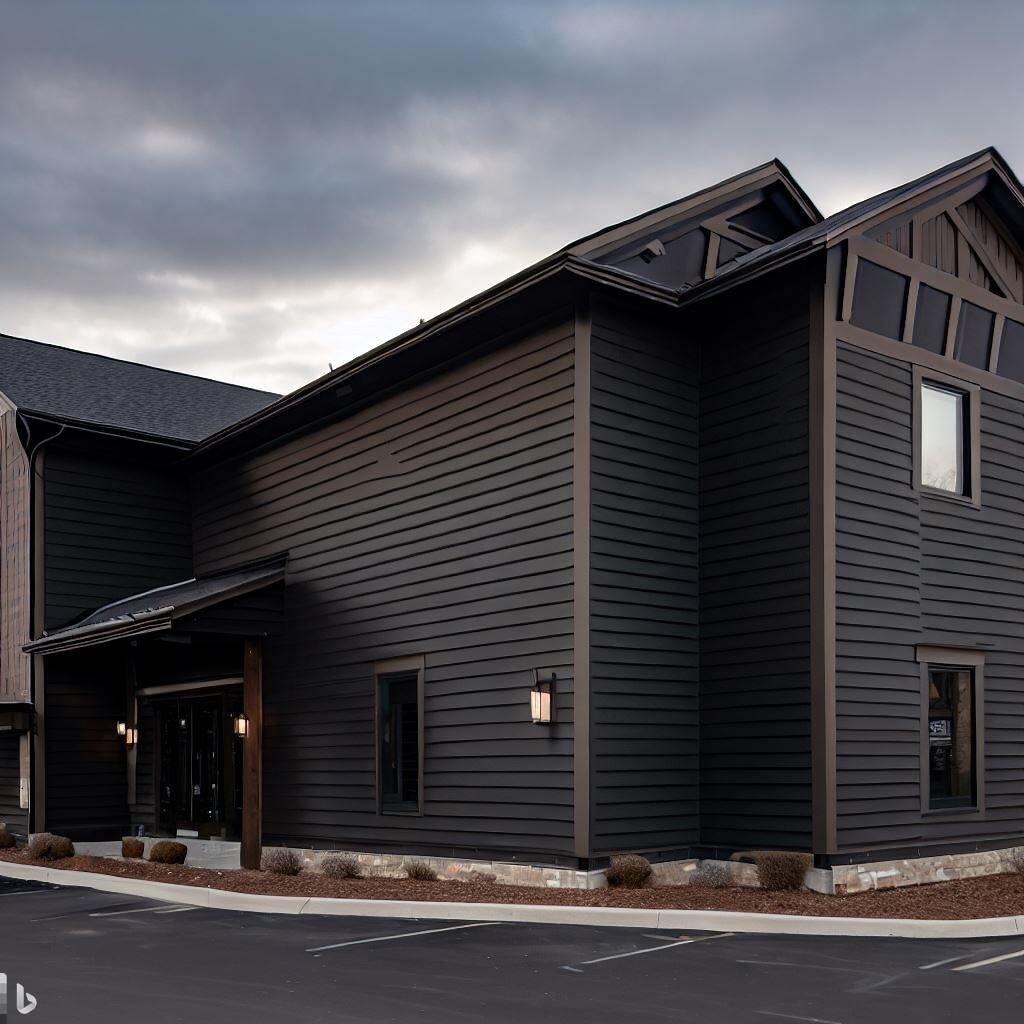
At the beginning, everything they did was for seeking a good match to the Victorian style, but by the 1930s, there were at least 28 different types of horizontal siding.
Even though many of these types are not easy to find at home stores today, they left a legacy behind. The market for horizontal siding has increased a lot throughout the years due to this previous history, bringing on many new styles, textures, colors, sizes and brands.
Comparing Vertical vs. Horizontal Siding
Pros about vertical siding
- It has a unique appearance, a good option for modern projects, adding curb appeal.
- Well-known for giving a sense of height to the building, specially for the small ones.
- It is considered the most durable type of siding orientation.
- Water resistant, it prevents water from entering the gaps between panels.
- Low-maintenance, easy to clean up.
Pros about horizontal siding
- A safe bet since its traditionality, appealing to many.
- It works on almost any style of property.
- Easy and faster installation; considered problem-free.
- It tends to be cheaper, paying less for labor and no need for extra materials.
- The most popular type, offering a huge variety of sizes and colors.
What are the disadvantages of vertical siding?
- A more complex and longer installation, it requires specific techniques.
- It is not cost-effective; it requires additional labor and material costs.
- As it is unusual, it might affect the property’s value.
- It needs a specialist contractor to be installed correctly.
What are the disadvantages of horizontal siding?
- It is less durable than vertical orientation.
- More susceptible to water damage, leading to mildew and mold.
- Either age or substandard quality or wrong installation can lead to warp.
- Difficulty in relation to the cleaning process, possibly causing a leakage.
- It can be the cheapest option, but more is waste with repairs.
Cost Implications
Installing a horizontal siding is definitely the cheapest option, after all, no extra materials are required to do such installation and specially no extra cost labor either, considering a knowledge that most contractors have and have been doing for a long time.

Whilst vertical siding is the most expensive one, because not all contractors know how to install it properly and it requires more time and specific techniques, they can charge more for this kind of project. In addition, it requires extra materials for a correct installation.
But, thinking of maintenance and potential repairs, vertical siding will not have any cost implications, seeing that it is extremely low maintenance, if installed correctly.
Whereas horizontal siding demands more maintenance, and the chances of some repairs are real, considering more prone to water damage over time, causing interior and exterior problems.
It can be affected by mold, mildew, and wrap, being necessary to waste money to maintain the property’s integrity and those who are inside it.
Which is more expensive, vertical, or horizontal siding?
In relation to the cost, comparing both sidings orientations, vertical and horizontal, the vertical one is often more costly! Here we are not talking about the price of the siding itself, but the cost involved in additional labor and materials necessary for installation.
When installing vertical siding, there is a furring strip between each plank which is not required for the horizontal one. And, as such orientation has turned into a popular option for houses just these days, not all contractors have the right knowledge and experience in installing it, needing proper techniques and labor.
Durability and Maintenance
Thinking about durability and maintenance, in regions where there are heavy periods of rain, vertical siding will perform better than the horizontal one if it is installed correctly.
Sidings disposed vertically follows the direction of the precipitation, preventing water to come inside the property structure, being free from any damage caused by water.
Consequently, its maintenance is way easier as well! So, even after months of exposure to environmental factors, resulting in dirt and grime, it can be cleaned easily just with water, being a worthy option of investment in the long run.
But that does not mean horizontal siding cannot perform as good as the vertical one! As its installation is not a challenge to contractors, the chances of having problems are almost nonexistent and we cannot say the same about vertical orientation, which must be done only by experts.
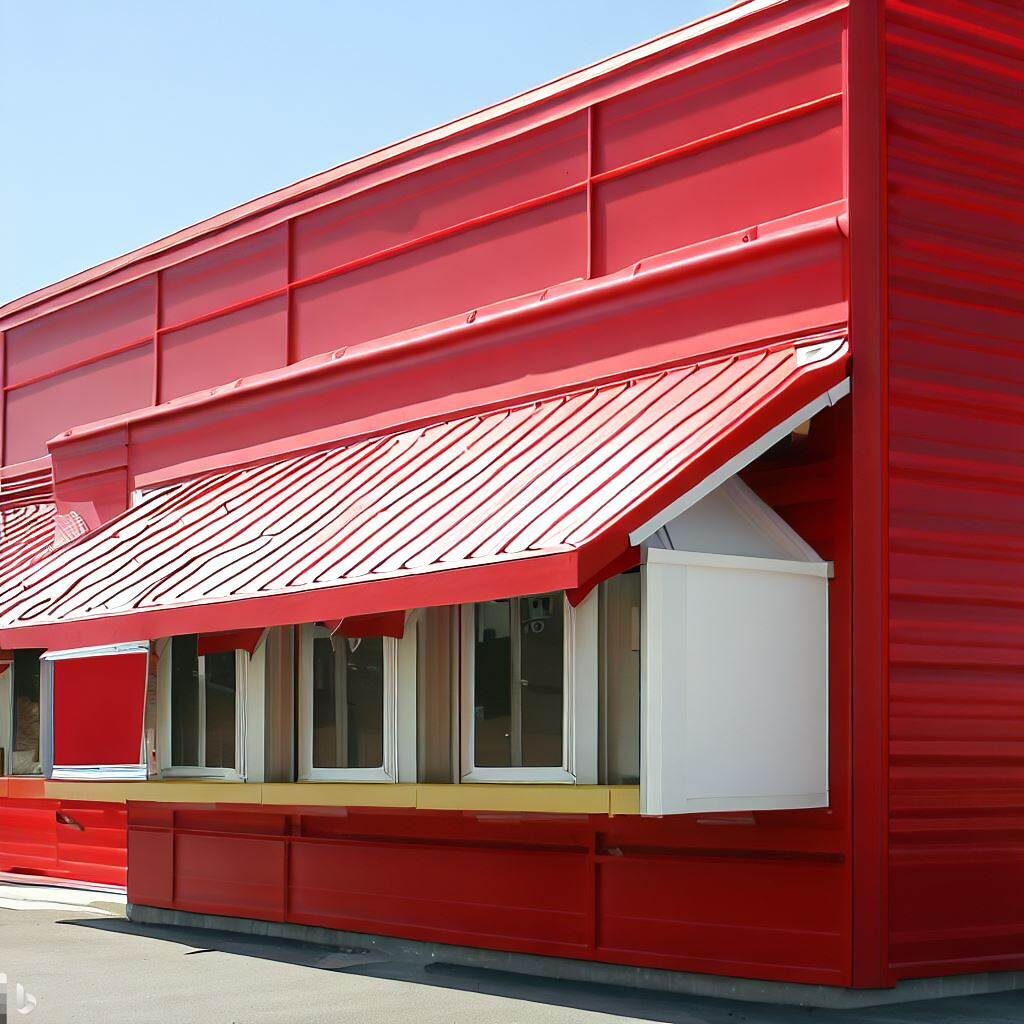
Horizontal siding is less durable if compared with vertical siding, due to the high-water leakage risk, allowing water to pass through the gaps between the panels. And, if its installation is not done correctly, water can collect on the tops of the planks, penetrating the walls.
Its cleaning must be done with care, but if you are vigilant with your horizontal siding, keeping the cleaning up to date and making all the necessary repairs, there is nothing to worry about.
Installation Considerations
It does not matter how many qualities each siding has and if one is better than the other, if the installation is not done correctly by a contractor with the right expertise, you will face many problems.
Horizontal siding arrived the earliest for homes in America, contractors are capable of installing it with ease as they probably have done it many times and on many properties. So, we can say that it is definitely a problem-free choice for owners.
This project tends to be a cost-effective and faster option because less is paid for labor and material requirements for doing such jobs are reduced.
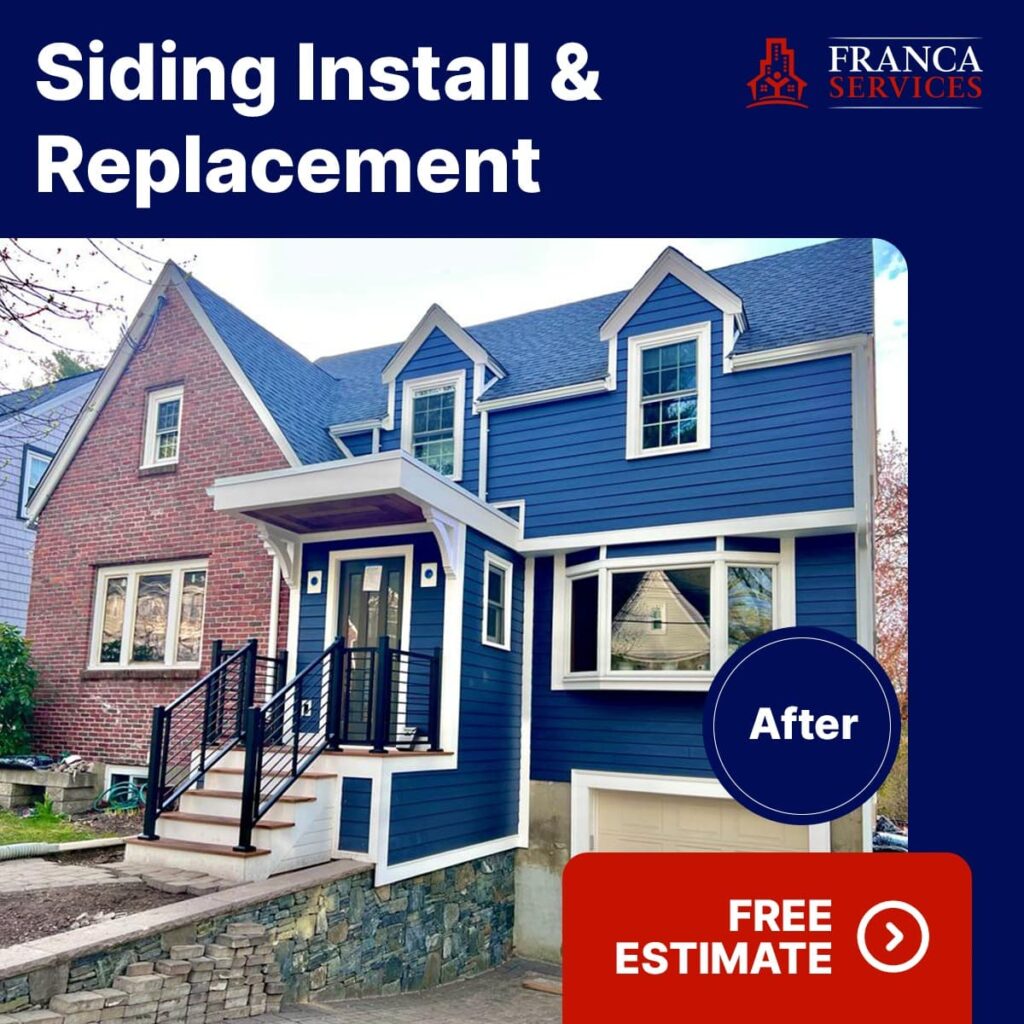
Whereas the same cannot be said about vertical siding. As it is not a usual option for houses, its installation is not well-known by all contractors and such a job must be done by an expert crew if you want to avoid water leakage and long-term damage.
Consequently, this complex job requires an additional cost for labor, since it takes longer, and it may be tricky.
Furthermore, it is also in need of extra materials, like a layer of furring strips that go between each panel of siding horizontally underneath. These strips are essential to ensure a smooth, leveled surface and water-resistant quality!
Making the right choice when choosing a contractor is the key to a vertical siding! Look for an experienced company if you want a fair price for installation.
Which is better: vertical or horizontal siding?
Ok, but after all that, which siding is better: vertical or horizontal one? – There is no right answer for such a question, it all depends on your preferences and how much money you can spend with installation.
If you are looking for something more traditional, classic, and less bold, an even an affordable option, and with easy application, horizontal siding must be the chosen one.
Whereas, if you are seeking for a unique and modern property, that is eye-catching among the neighborhood and achieves the distinctive and popular board and batten look, vertical siding is the guy!
But that does not mean you cannot have both on the exterior of your residential or commercial building, because an extraordinary look can be created mixing both sidings orientations.
Another important thing to consider when choosing between vertical or horizontal siding is the resale value. As we have discussed, horizontal has a more traditional look and is possible to find on the exterior of innumerous houses, while vertical is a bolder and moderner choice, so it is not common to see it on houses.
So, a house that is “normal” and “traditional” can be sold more easily and faster on the market, whilst a “bold” and “modern” structure might decrease a home’s value.
Factors to Consider
Now that you know more details about vertical and horizontal siding, before settling which one to buy, you must consider carefully what factors are important to you!
Personal aesthetic preferences
Vertical siding is for those who want to achieve a unique appearance, mixing modernity and contemporaneity to the property. This is the right choice if you want to add curb appeal to your property.
Although, for those traditional preferences, horizontal siding is considered a safe bet. It has the aesthetic benefit of working very well on any style of home, offering a variety of options, considering sizes and colors.
Budget
If your preference is for vertical panels, you have to consider the additional labor and materials costs in relation to horizontal ones. It is an easy job to install it, a few contractors know with excellence how to work with this type of siding, and more materials are necessary to lay it properly.
While vertical panels are more expensive, horizontal ones are budget friendly, the biggest part of contractors have the installation ability to lay these panels, so no additional cost will be charged for either installation or extra materials, since horizontal siding does not need them.
Regional climate considerations
Lastly, if you live in a region that suffers a lot with severe periods of rain and snow, vertical siding might be better to go over a property! If it is installed correctly, all you have to do is clean it from time to time.
Whereas, a horizontal siding requires more attention, because of its high-water leakage risk, affecting directly the interior and exterior. It can also suffer from warp, losing its ability of keeping moisture away.
Consultation with Professionals
Even though some people might think it is possible to install a siding by themselves or to hire a lack experienced company, this is not advisable under any circumstance!
Siding orientation affects directly the home’s value, appearance, and function. This is not a simple job that could be done by anyone! A wrong installation can cause serious damages to your property structure, leading to more work and materials to do the necessary repairs, therefore more money spent.
Furthermore, according to your region and neighborhood, it is not advisable to invest in a vertical siding installation, because as it is not very common for houses, if you intend to sell your property soon, your home’s value might be affected, forcing you to sell it for a lower price on the market.
Finally, when talking with a professional contractor, they can give important advice about appearance and styles, achieving the property of your dreams!
Do Vertical or Horizontal Siding with Franca Services
Did this article help you understand more about vertical and horizontal siding?
Do you have any further questions about which one would suit best your property and your tastes?
Fill in the application and send us a message, let us and our experienced team help and assist you!
We will be pleased ensuring our customer’s happiness with our provided services, delivering only services of extreme quality, using the best materials that we get from our trustable suppliers. And their price is budget friendly, offering materials for any pocket, keeping their good quality.
We are prepared for any challenge or potential problems! Let Franca Services make a difference in your life!


